In May 2022 Chicago’s Field Museum of Natural History renovated its outdated Native North America exhibit hall and opened Native Truths: Our Voices, Our Stories, a permanent exhibition. Doug Kiel, assistant professor of history at the Weinberg College of Arts and Sciences and a citizen of the Oneida Nation, served on the Native American advisory committee that spent 4 ½ years setting the agenda for the renovation and bringing it to life. Kiel talked with Northwestern Magazine about what makes Native Truths so radically different from its predecessor. Kiel also highlights their favorite exhibit features and celebrates the relationships that have been strengthened between Native people and the Field Museum.
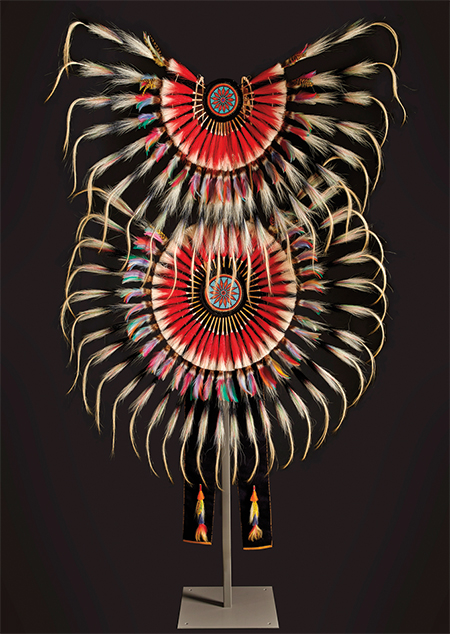
Credit: Dancing Bustle by Ruben Mitchell (SAC & FOX), circa 1978: ©Field Museum
At the time of the Field Museum’s opening in 1894, Americans truly believed that Native people and everything about us were going to completely disappear, and so anthropologists were salvaging and collecting everything they could before it vanished forever.
But we did not vanish.
In the old exhibit hall, there was a section with a ton of spoons, for instance, but no context. That’s the older-school approach: Show off all this stuff. But for Native people to walk through a space like that — it felt ostentatious, like showing off impressive loot.
The approach of this new exhibition is fewer objects that you get to know more intimately. The Field is a natural history museum, but with this exhibition, the museum is engaging contemporary Indigenous artists and supporting and acquiring their work as well.
There are four exhibit areas, or “story pods” as we call them, and their content will rotate over time. But in each you’ll see new acquisitions alongside historical objects, as well as media presentations with Native narrators who explain their cultural significance.
One of my favorite things about the new exhibit is the flooring, which is made of maple timber from the Menominee Forest in Wisconsin, one of the most sustainably managed forests in the world. Northwestern and the Field Museum reside on the homelands of the Menominee people. And there’s a tree ring on display that’s 192 years old — it’s from the white pine that gave us the exhibit’s benches. It’s so educational and beautiful. We realized, “Wow, this tree was born just before Chicago was!”
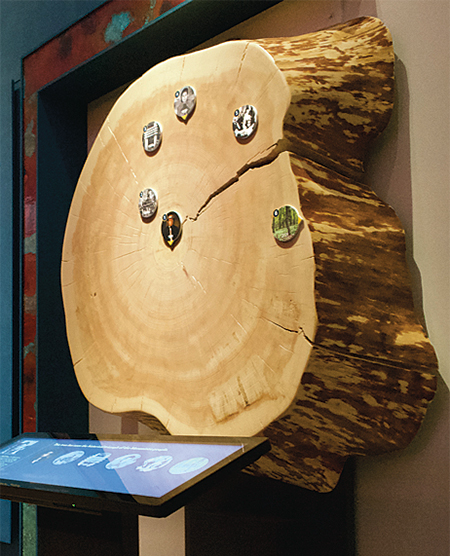
The exhibit’s floors and benches were made with timber from the Menominee Forest in Wisconsin, including a 192-year-old white pine. Above, a “tree cookie” showing the growth rings of that tree is on display at the museum. Credit: © Field Museum, Edgar Lopez
The floor and benches also represent a new relationship between the Field Museum and Menominee people — and a chance to do something joyful. The advisory committee helped make those connections, and by the end of the renovation, we had about 130 Native collaborators and contractors from across North America — 130 voices that were all part of the process. So the floor is emblematic of not only an Indigenous way of thinking but also of the relationship that we strengthened. We had a beautiful ceremony at the exhibit opening, during which Menominee and Oneida leaders talked about the significance of the white pine to our communities.
We tried to find every opportunity through the creation of the exhibit to work with Native artists and as many Native contractors as possible. That was against the grain for an institution that is quite proud that it builds everything in-house.
There’s a series of murals by Monica Rickert-Bolter, a local Black and Potawatomi artist. Chicago founder Jean Baptiste Point du Sable and his wife, Kitihawa, were Black and Potawatomi, respectively, and so it felt symbolically great to have this well-respected artist in our community contribute to the work in this way.
She built these beautiful murals of Turtle Island, which refers to the creation story of Sky Woman falling and landing on Turtle’s back. Turtle Island is North America. If you look at a map, it really does look like a turtle: Mexico’s the tail, Greenland’s the head and so on.
Then there are these murals of the Great Lakes. The coolest thing is that she created a new story that is in the style of a traditional Potawatomi story, grounded in nature.
In the mural, the Great Lakes are all Indigenous women personified, and they are upset in regard to climate change. Lately the lakes are lashing out to show us their disapproval. The lakes become these active, responsive beings in the story. They’re tumultuous, and there’s a set of lessons that comes out of that. It’s a traditional kind of story that has its own contemporary spin.
My favorite single piece on exhibition is a stool with a set of spikes on it. It’s a contemporary piece by Potawatomi artist Jason Wesaw — the stool came from a Catholic church, a found object that Wesaw modified. The artist’s statement says, “Ge’go ibe jibdebeke’n!!” which translates to “Don’t sit there!!” It’s a commentary on the Catholic boarding school experience and the pain inflicted [on Native families] by those institutions.
The next update to the exhibit will be a story on lacrosse. Every 18 months or so, there’s going to be a new story rotation into one of the pods. Right now on display are exhibits about Lakota hip hop, Meskwaki seeds, California baskets and Chaco Canyon. The California baskets one will be swapped out for lacrosse.
Lacrosse is an Indigenous game. It was a violent game, actually. Some Native communities referred to it as “war’s little brother” and it was used in lieu of going to actual war. A match could go on for days. People could die. It was some serious shit, but it was conflict mediation, and in an Indigenous context, it was a very different game from what you see people playing today. But it’s definitely our game, and we are still really good at it.
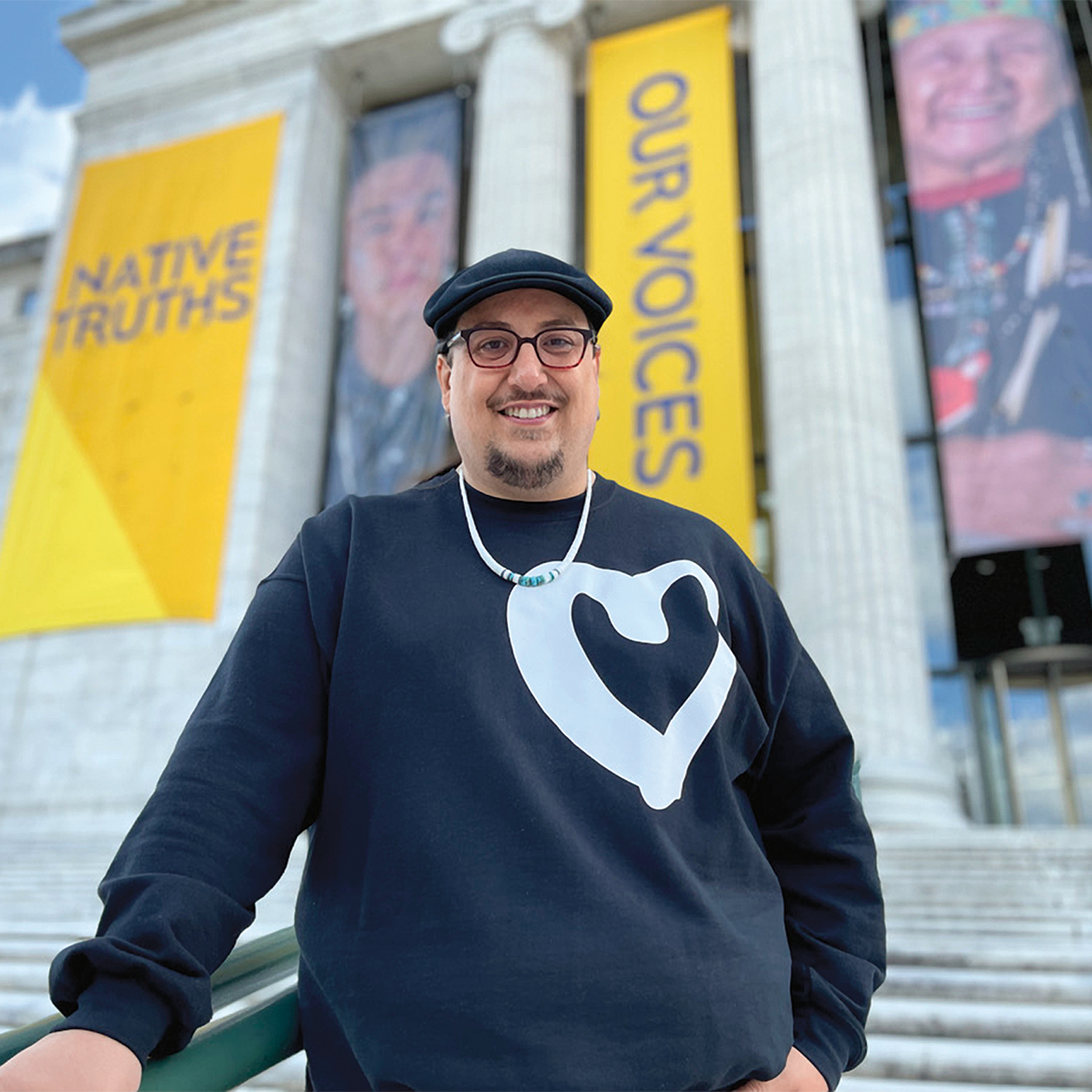
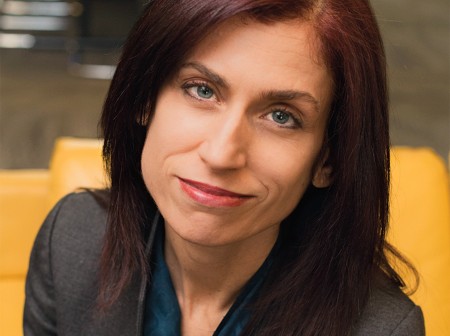
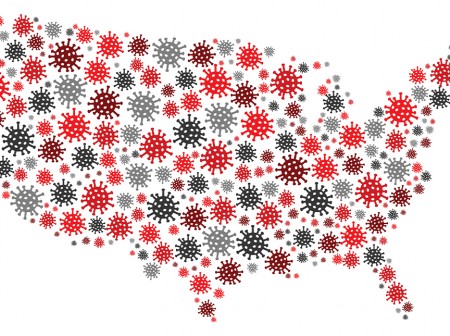

Reader Responses
No one has commented on this page yet.
Submit a Response